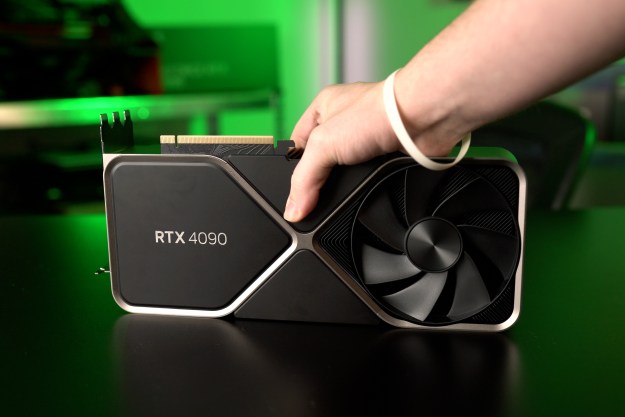Gotham Knights isn’t off to a good start, especially on PC. After the developer announced the game would be locked to 30 frames per second (fps) on console with no performance mode, I immediately saw visions of the infamous Arkham Knight PC port — and my worst fears were confirmed.
Although Gotham Knights isn’t as disastrous on PC as Arkham Knight was at launch, the game still has serious performance issues. It’s demanding without much of a visual payoff, but the real issue comes down to how much the game stutters regardless of the hardware you’re using.
Get ready to stutter
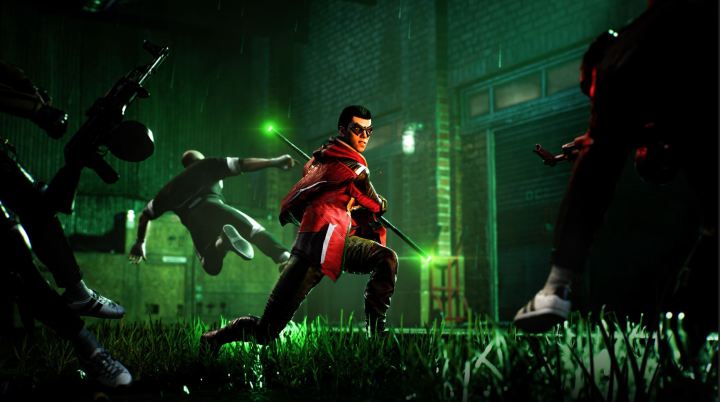
Arkham Knight is an infamous PC port. At launch, the game stuttered like crazy, performance was lacking even with powerful hardware, and the game was locked to 30 fps. Gotham Knights isn’t a repeat of Arkham Knight, but it’s close.
In terms of pros, the game has an upcapped frame rate — technically it’s capped at 360 fps, but you’re free to set that limit wherever you want. Performance is decent, though you’ll need a recent high-end PC to run the game (it has insane system requirements). Stuttering is the connective tissue here, and it’s nasty in Gotham Knights.
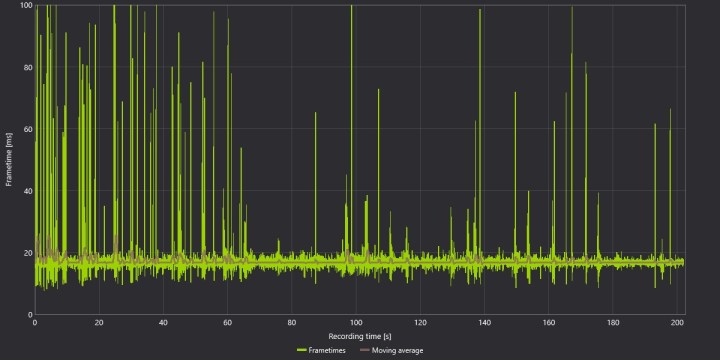
Above, you can see a frame time chart when playing for about four minutes in Gotham City. This was with an RTX 3060 Ti and Core i5-12600K, which is close to the configuration the developer recommends for 1080p at 60 fps.
I actually capped my frame rate here to 60 fps to give the game the best chance possible, but you can still see massive spikes in the frame time, with many going above 100ms. If you’re not used to seeing this type of graph, each one of those spikes (particularly the large ones) is a stutter.

Frame times are a bit abstract, so check out the plot of the frame rate each second above. There are sections where Gotham Knights stayed locked at 60 fps, but more often than not, the game fell far below that point. There are constant dips into the high 40s and some severe drops below 30 fps.
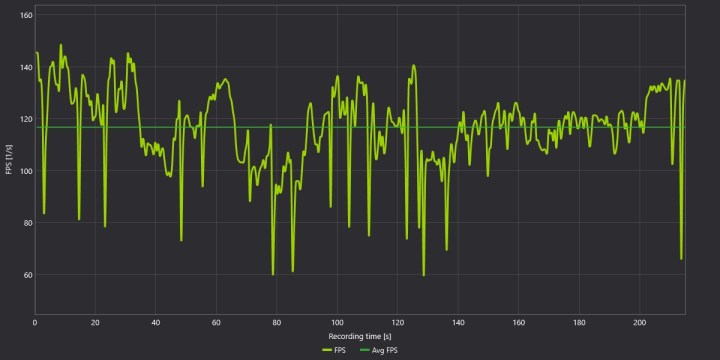
This isn’t an issue with the graphics setting, either. I had ray tracing turned on for the above tests, but I ran some with ray tracing turned off as well. I turned the fps limit off for these runs, and you can see that this configuration hits an average fps of around 115. The stuttering is still present, however, with the frame rate dropping frequently into 80 fps territory and sometimes as low as 60 fps.
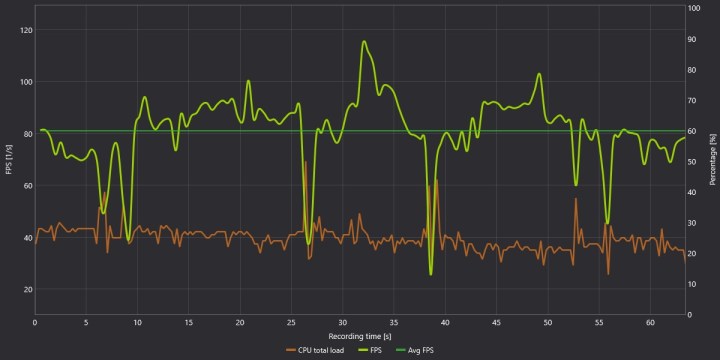
I also tested with an Intel Core i9-11900K and an RTX 4090 at 4K — and again, got more stuttering. For reference, the chart above shows 60 seconds of gameplay on the RTX 3090 with a Core i5-12600K at 4K. In just 60 seconds, the average frame rate of 80 fps dropped below 50 fps five times. And anecdotally, even outside the open world, I saw stuttering when playing through closed story missions.
I tested with ray tracing on and off, at different resolutions, with a frame rate cap on and off, and with different GPUs, but one thing always remained consistent: stuttering. I don’t think Gotham Knights will get review-bombed like Arkham Knights did (don’t add fuel to the fire, folks), but I’d be hesitant to pick the game up on PC at launch.
It’s possible that a new driver will improve the stuttering, but this seems like an issue in Gotham Knights more than anything. I used Nvidia’s latest 522.25 driver, which includes support for Gotham Knights. My colleague Tomas Franzese reviewed the game on console and noted similar stuttering and inconsistent performance, as will, despite the fact that the game is locked at 30 fps. It’s a good thing the PS4 and Xbox One versions of Gotham Knights were canceled — we could easily be in another Cyberpunk 2077 situation if they hadn’t.
What’s the problem, and how do I fix it?
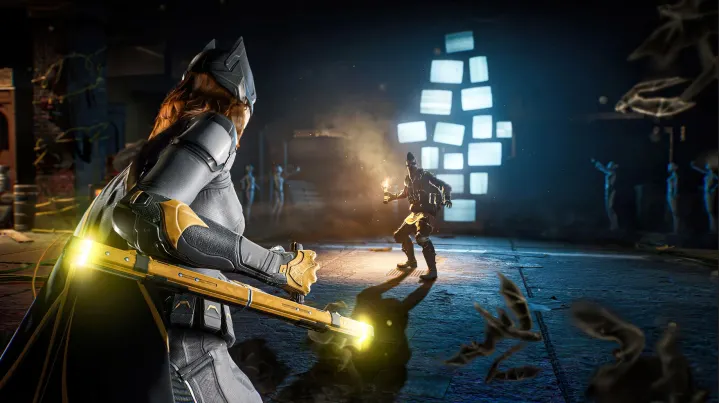
There are a lot of issues that can cause stuttering in a game. Earlier this year, for example, the Unreal-based Elden Ring fell victim to shader compilation. Basically, Unreal Engine 4 compiles shaders on the GPU in real time, so you’d see a stutter when assets you’d never encountered loaded into the game. The same was true in Stray, which also uses Unreal Engine 4.
And sure enough, Gotham Knights uses Unreal Engine 4. That’s only part of the story here, though. Developer WB Games Montreal, while justifying the 30 fps cap on consoles, said that “due to the types of features we have in our game, like providing a full untethered co-op experience in our highly detailed open -world, it’s not as straightforward as lowering the resolution and getting a higher fps.”
But there are a few things you can do to limit the stuttering. For starters, the stutters are the worst when you’re in a new area. As you play the game, they will smooth out. A frame rate cap certainly helps make the game feel more consistent, as you’re not getting the contrast between extreme highs and lows.
Ray tracing plays a role, as well. Keep ray tracing on or turn it off, but don’t swap between them too often. The game has to recompile a lot of shaders when swapping between ray tracing modes, which leads to more stuttering once you close out of the graphics menu.
There is a lot more to talk about with Gotham Knights on PC. Unfortunately, I haven’t yet had time to dig in and test all of the settings on different hardware. The game supports Intel XeSS, Nvidia DLSS, and AMD FSR 2.0, as well, providing a great opportunity for a three-way shootout — so there are some interesting features to test as I dive deeper.
Before I get to that, though, you need to know about the stuttering issues on PC. The game launches on October 21, and although it’s possible WB Games Montreal will release a patch in the meantime, the stuttering issues likely won’t be solved for a while. I also encountered one crash in my brief time with the game, while Tomas encountered three crashes on the Xbox Series X during a full playthrough.
Editors' Recommendations
- Dragon’s Dogma 2 PC performance: best settings, crashing, stuttering
- Samsung’s new OLED gaming monitor might have a problem
- 4K gaming monitors are getting cheaper, but I still won’t buy one
- Star Wars Jedi: Survivor is being review-bombed on Steam as a ‘total crap’ PC port
- How a viral bodycam game tricked the internet into thinking it was real footage




